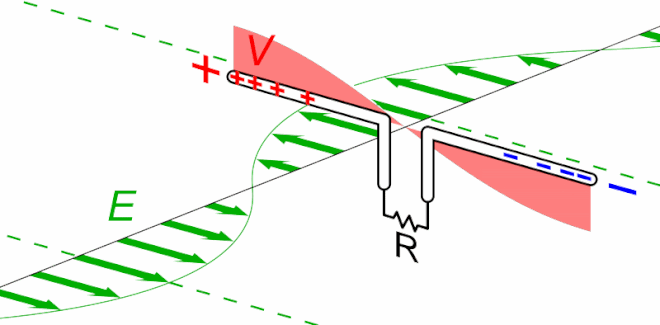davezawadi (David Stone):
Whilst in some cases surge protection may be useful Graham, the regulations take this to being a requirement and specifically state that this is lightning protection. The specification for its fitting is entirely based on lightning strikes.
Absolute nonsense. BS 7671 says nothing of the sort. In fact, see 2nd para of 443.1.1
This section does not specify requirements for protection against transient overvoltages due to direct or nearby lightning strokes on the structure.
The overvoltages covered by BS 7671 are atmospheric origin or due to switching. As I inferred in my previous response, the former being either cloud-cloud or remote (in which case impedance comes into play).
Were your devices suffering from such spikes or other causes? I know and have measured many mains spikes, but the cause is usually other things, so why not come clean and simply say surge protection may be useful in some circumstances?
The cost-benefit analysis should be up to the consumer, not some remote manufacturer or regulation committee who have no idea of the likelihood or cost of any damage. It might well be a good idea for a data centre, but for Mrs Bloggs who has two LED lights, probably not worthwhile. The energy from switching spikes and similar is very low compared with lightning, and may often be entirely satisfactorily removed with very simple and cheap VDRs. Live conductor to Earth protection is rather different to L-N protection, simpler and effective for preventing damage to connected semiconductors, particularly in with the mains supply impedance being raised with some small series inductors, except in extreme cases. The regulations seem to have a fascination with the line-Earth voltage which is only seen by any attached EMC suppression components. I don't doubt that some equipment is occasionally damaged, or at least fails, but deciding the exact cause is often very difficult.
gkenyon:
We are now at a point where the cost-benefit analysis is perhaps moving in favour of fitting them, as I said in my previous e-mail. I agree that, say 15 years ago, my view would have been wholly different, but I'm totally sold on the cost-benefit based solely on the cost of equipment I've had damaged by cloud-cloud strikes alone over the past 20 years, in an urban area (although by the coast). And I know I'm not alone.
I thought that this thread was about AFDD, but as for SPD, I agree. FWIW, I think that the whole business of lightning stroke/strike in BS7671 is far too complicated and I find it difficult to see why a new build would not have SPD. I have never had any damage personally, but when I install a new CU it will have it. It isn't that the benefit has increased, it is that the cost has decreased. ?
Chris Pearson:gkenyon:
We are now at a point where the cost-benefit analysis is perhaps moving in favour of fitting them, as I said in my previous e-mail. I agree that, say 15 years ago, my view would have been wholly different, but I'm totally sold on the cost-benefit based solely on the cost of equipment I've had damaged by cloud-cloud strikes alone over the past 20 years, in an urban area (although by the coast). And I know I'm not alone.I thought that this thread was about AFDD, but as for SPD, I agree. FWIW, I think that the whole business of lightning stroke/strike in BS7671 is far too complicated and I find it difficult to see why a new build would not have SPD. I have never had any damage personally, but when I install a new CU it will have it. It isn't that the benefit has increased, it is that the cost has decreased. ?
I agree with you on the new build ... part of the difficulty with BS 7671 is that it applies not only to homes, offices and shops, but other installations, some of which (say if it's just resistive heating loads, or contains loads with in-built surge protection) may not require SPDs.
In addition, there are existing properties with which it may be difficult to adopt a blanket mandate, although those difficulties are there already. For example:

davezawadi (David Stone):
Graham the 443 requirement to fit SPDs is based on the lightning chart and a "magic" formula. True it adds "transients due to switching" as an extra justification, but I am afraid I am far from convinced that they are necessary to protect electronic devices. Induced lightning current in an underground cable is very small, as the conductor spacing is tiny, so why is its length in the formula?
Of course the risk of issues with non-direct phenomena of atmospheric origin depends on the frequency of occurrence ???
Length is there for "common mode" as Mike points out.
We're about to take you to the IET registration website. Don't worry though, you'll be sent straight back to the community after completing the registration.
Continue to the IET registration site